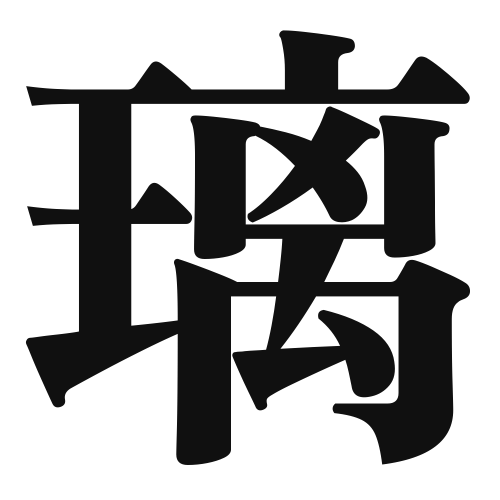1. Overview of Meaning
The kanji “璃” (ri) refers to a type of glass or glaze, often associated with beauty and clarity. It is commonly used in contexts related to ceramics and decorative arts.
2. Formation and Radical
Formation of the Kanji: The kanji “璃” is a phonetic compound (形声文字) that combines the meaning of “beautiful” and the sound component. It is not a pictogram or ideogram but rather represents a concept through its components.
Radical: The radical for “璃” is “王” (king), which often relates to precious materials or beauty.
3. Examples of Usage
Common Words and Phrases:
- 璃器 (りき, riki) – glassware
- 瑠璃 (るり, ruri) – lapis lazuli, a deep blue stone often used in art
Example Sentences in Daily Conversation:
- この璃器はとても美しいです。 (This glassware is very beautiful.)
- 彼女は瑠璃のネックレスを持っています。 (She has a lapis lazuli necklace.)
4. Synonyms and Antonyms
Similar Kanji:
- 美 (び, bi) – beauty; while “璃” refers specifically to glass or glaze, “美” is a broader term for beauty.
Opposite Kanji:
- 粗 (そ, so) – rough; this kanji represents something that is not refined or polished, contrasting with the beauty implied by “璃.”
5. Cultural and Historical Background
Relation to Japanese Culture: The kanji “璃” is often found in traditional Japanese arts, especially in ceramics and glassmaking, which are highly valued in Japanese culture.
Proverbs and Idioms: While there are no specific proverbs that use “璃,” the appreciation for beauty in craftsmanship is a common theme in Japanese sayings, reflecting the cultural significance of materials like glass and ceramics.
